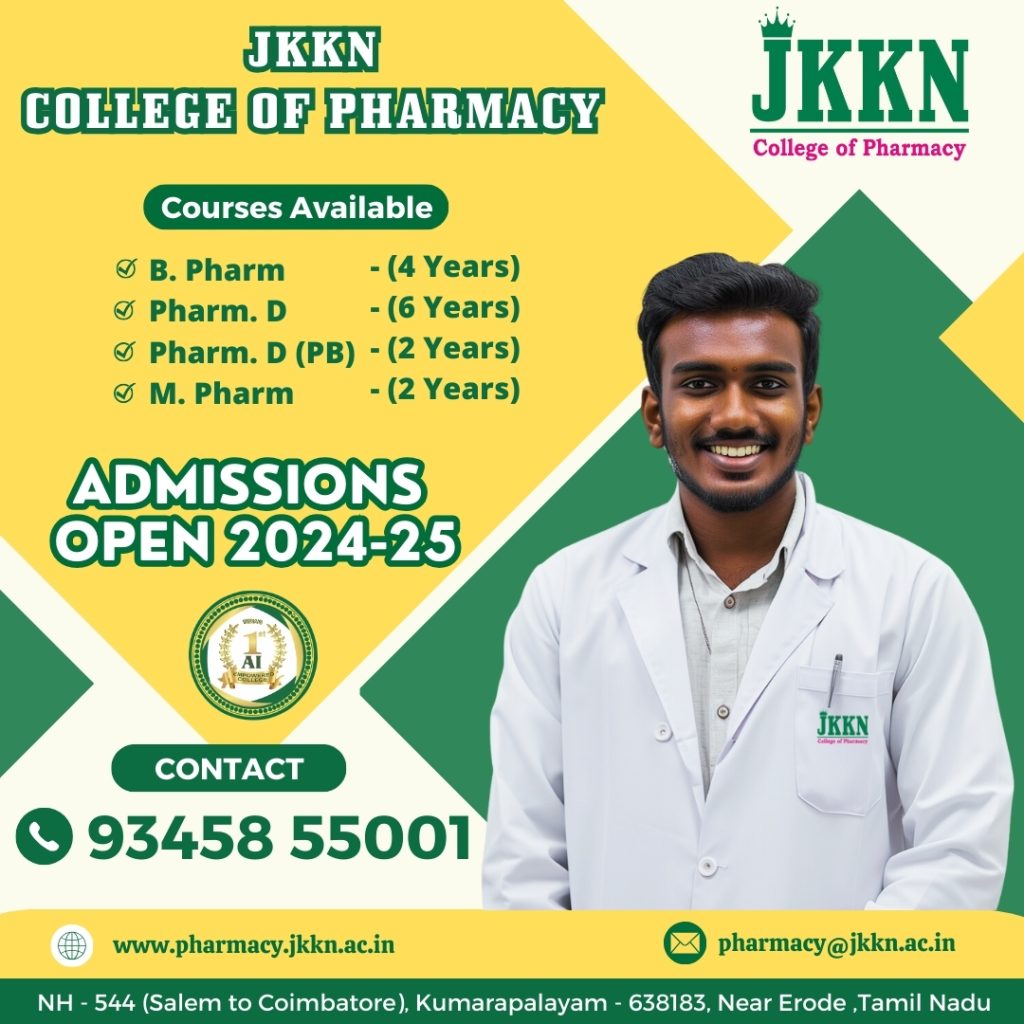B. PHARM II-SEMESTER/ PHARMACEUTICAL ORGANIC CHEMISTRY-I THEORY
After a successful completion of the course the students will be able to
| Course outcome number | Course Outcomes | Cognitive level |
| CO1 | List the classifications of organic compounds, common and IUPAC nomenclature systems for organic compounds, and the various types of structural isomerism in organic compounds. | C1 |
| CO2 | Demonstrate a comprehensive understanding of organic compounds’ structural features and nomenclature principles, including open-chain and carbocyclic compounds. | C2 |
| CO3 | Explain the properties, stabilities, and reactivity of alkanes, alkenes, and conjugated dienes and the outcomes of various reactions, including halogenation, ozonolysis, electrophilic and free radical addition reactions. | C3 |
| CO4 | Analyze reactions such as E1, E2, SN1, and SN2 reactions, including factors affecting their kinetics, stereochemistry, rearrangements, structure, and uses of alkyl halides and alcohols. | C4 |
| CO5 | Evaluate nucleophilic addition reactions of carbonyl compounds, including aldol condensation, Cannizzaro reaction, and benzoin condensation, qualitative tests, and practical applications of carbonyl compounds, such as aldehydes and ketones. | C5 |
Remembering (C1), Understanding (C2), Applying (C3), Analyzing (C4), Evaluating (C5) and Creating (C6)
I-B. PHARM /PHARMACEUTICAL ORGANIC CHEMISTRY-I PRACTICAL/
I YEAR II-SEMESTER
After a successful completion of the practicals, the students will be able to
| Course outcome number | Course Outcomes | Psychomotor Level |
| CO1 | Recall the preliminary tests used for the qualitative analysis of unknown organic compounds, including color, odor, and detection of elements (Nitrogen, Sulphur, and Halogen) by Lassaigne’s test and functional group tests. | P1 |
| CO2 | Demonstrate the principles and procedures involved in systematic qualitative analysis of organic compounds, including solubility tests, functional group tests, and the significance of melting point/boiling point determination. | P2 |
| CO3 | Identify the unknown organic compounds, including detecting functional groups, solubility characteristics, and determining melting point/boiling point. | P3 |
| CO4 | Analyze the results obtained from qualitative tests, functional group identification, and melting point/boiling point determination to confirm the unknown organic compounds accurately. | P4 |
| CO5 | Evaluate the reliability and validity of their qualitative analysis of results, purity of the unknown compounds, and make informed decisions based on their observations and data. | P5 |
Imitation (P1), Manipulation (P2), Precision (P3), Articulation (P4) and Naturalization (P5).


